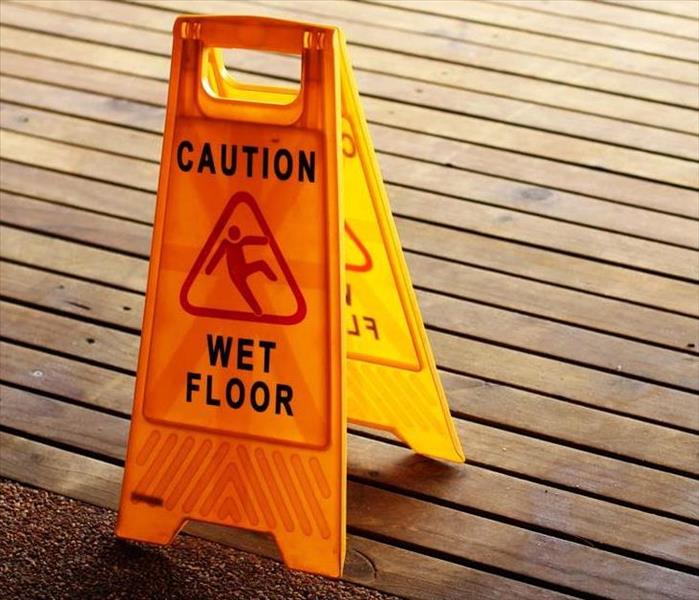6 Tips for Dealing With a Water Damaged Wood Floor
1/14/2022 (Permalink)
Getting any kind of flooring wet is not ideal, but water damage from a pipe burst or other source can be particularly damaging to wood floors due to the porous nature of the material. These tips can help you minimize the damage to your wood flooring.
How To Save Your Wood Floor From Water Damage
Drying your wet floor quickly is the most important thing you can do to reduce the amount of damage. These are some steps you can take:
1. Remove Wet Objects From the Floor
Wet objects, such as rugs and furniture, can continue to leech moisture into the floor. They may also develop mold and mildew that can infiltrate the seams and pores of your flooring. Remove all wet items and place them in an area, such as outside, where they can dry without damaging the floor.
2. Clean Up As Much Water as Possible
If you are dealing with a small spill, you can absorb the water with mops, towels and clean rags. For larger spills, such as a pipe burst, use a wet vacuum and run it until you no longer see any new water being pulled into the canister. If you don't have a wet vacuum, you may be able to rent one in Clearfield, UT.
3. Clean the Surface of the Wood
Debris and dirt in the pores of the floor can retain water and bacteria that may damage your floors. Clean the floor with a disinfecting cleaner that does not make suds. Use a soft-bristled scrub brush. After you have cleaned the floor, run the wet vacuum another time to remove any water and then use a wood floor cleaner to remove any leftover disinfectant. Rinse the floor and dry it one more time.
4. Thoroughly Dry the Wood
Even if your floor appears to be completely dry, there may be water that has penetrated the plank that can not be removed with a wet vacuum. Put a dehumidifier in the middle of the room and run it for at least 24 hours to help dry the floor. Position fans around the room to blow air across the surface of the floor. If the damaged floor is on an upper level, place fans on the level below and aim them at the ceiling to help dry out the subfloor. If the weather is dry, you can open doors and windows to increase air circulation.
5. Check for Mold
Mold can begin to develop 24 to 48 hours after water damage. Inspect the floor for signs of mold growth. If you believe you have a mold problem, consider contacting a mold remediation company to address the mold issue before it gets worse.
6. Test for Moisture
Use a moisture testing meter to check for any moisture remaining in the wood. It may take several weeks for your floor to completely dry out. Continue to run your dehumidifier and fans until no moisture remains.
The longer you wait to dry out your flooring after a pipe burst or other water damage occurs, the more damage your floor is likely to sustain. Taking quick action can prevent unnecessary damage.




 24/7 Emergency Service
24/7 Emergency Service
